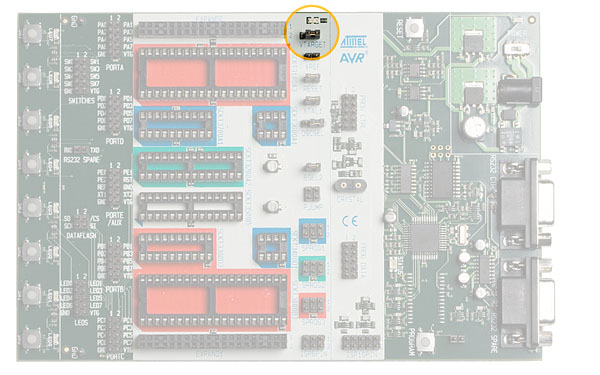
VTARGET controls the supply voltage to the target Atmel AVR microcontroller sockets. It can either be controlled from Atmel Studio or supplied from an external source. If the VTARGET jumper is mounted, the On-board supply voltage is connected. The On-board supply voltage can be adjusted to 0 - 6V from Atmel Studio. Always verify the respective datasheet for the AVR device operating voltage before adjusting VTARGET voltage.
Using the on-board supply voltage, approximately 0.5A can be delivered to the target section. See STK500 Block Diagram to understand what is covered by target section.
If the VTARGET jumper is disconnected, target VCC must be supplied from an external source at one of the VTG pins on the PORT headers.
When using an external source for VTARGET, the user must control that VTARGET is at a higher voltage level than AREF (Analog Reference Voltage). Always connect common ground (GND) when using an external VTARGET voltage.
The STK500 master MCU controls the target voltage using the internal PWM, Figure 3- 22 below shows the internal connection of the VTARGET signal.

The green LED will light when there is a voltage available on the VTG net. It’s impossible to use the debug or programming area of STK500 without VTG.
The internal VTarget has a short circuit protection. If VTarget is set to be higher than 0.3V and the Master MCU measures it to be below 0.3V for a duration of 80 ms, the Master MCU will shut off the VTarget and the Internal AREF. When this happens, the status LED will blink quickly.
If an external VTarget is used and the external VTarget is turned off, this will also be detected by the STK500 as a (false) short circuit. The latter case can be avoided by lowering the internal VTarget below 0.3V.